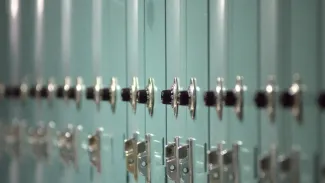Where we stand: School design & student safety
Over the course of almost two decades, architects have worked with school communities across the country in response to repeated acts of deadly violence targeting students and educators. Architects feel a deep responsibility to contribute to solutions to this troubling issue.

Architects protect the health, safety, and welfare of building occupants
We’re committed to working with all concerned stakeholders and every level of government, on both sides of the aisle, to keep our children safe.
As architects, we believe that schools are intended to be communities and should be planned without sacrificing the inherent positive qualities of the school environments we all desire for our children. We know there is no one-size-fits-all design solution to school safety. School design must adapt to differing and evolving community concerns, support student health and safety, and create productive learning environments, all while respecting stretched school budgets.
Architects address social, psychological, economic, and environmental factors in building design Architects believe that innovative architectural design solutions can keep learners and learning central to the decision-making process in designing safe schools.
As the professional association of architects, AIA supports architects and their communities by dedicating resources and expertise in the following ways.
- AIA will lead efforts at the local, state, and federal levels of government to update school design guidelines. Architects can offer strategies designed to avert and restrict violence while preserving open learning environments that can positively influence student behavior and create more connected, open school communities. Achieving this critical balance in schools requires the development of best practice design standards and guidelines. AIA commits to advising on best practices and to monitor their effectiveness. AIA will work collaboratively with all levels of government to ensure they are adopted and followed.
- AIA will support collaborative and continuing education to achieve safe school design. AIA will continue to engage in activities to better inform its members and leaders in the community of the many design options and avenues available for school officials to access. AIA will aggregate and disseminate school safety best practices by engaging its members, Knowledge Communities, and chapters across the country. AIA will conduct grassroots efforts to educate state and local government officials on the importance of implementing safe school design in their communities.
- AIA will strive to make safe school design eligible for federal grants. AIA will spearhead the formation of a multi-stakeholder coalition to support a bipartisan effort that makes architectural and design services for schools an allowable use of funds within existing federal funding and grants.
- Federal School Safety Clearinghouse. AIA was integral to the enactment of a law that created the School Safety Clearinghouse, a multi-federal agency effort to address school safety through a variety of efforts (architects, mental health professionals, law enforcement, resources, etc.), including design. Learn more at https://www.schoolsafety.gov.
Much of the public debate about school safety has focused on access to firearms and mental health services. Neither approach to solving school violence has progressed much over many years despite all-too-frequent tragedies. Architects can improve school safety through the power of design now.
By design, innovative learning environments address the need for contemporary learners to work peacefully, collaboratively, and safely. To design and build the new schools we need and to retrofit existing schools requires significant support and resources that go beyond just the architecture, engineering, and construction communities. AIA urgently calls on all policymakers and stakeholders to work with school communities to safeguard students and teachers while keeping schools positive places of learning and growth.
